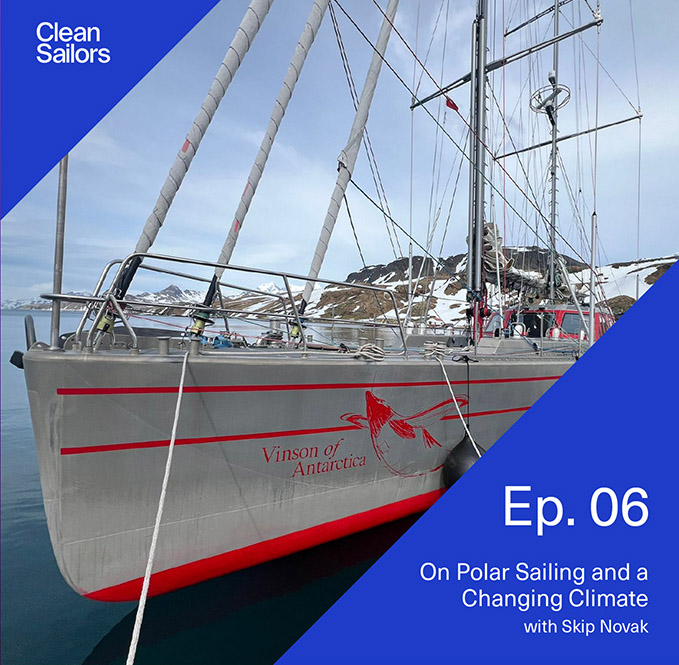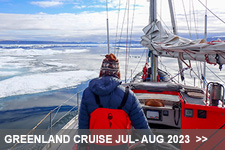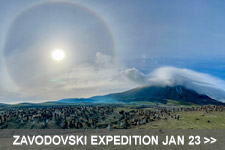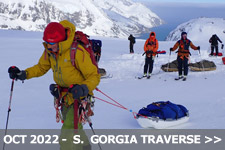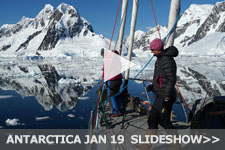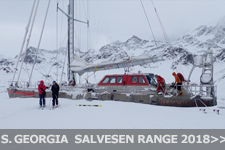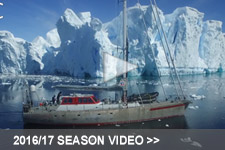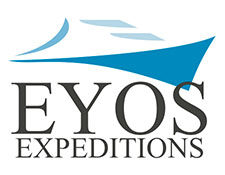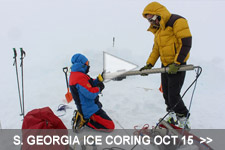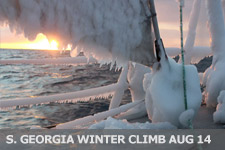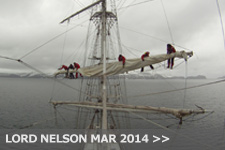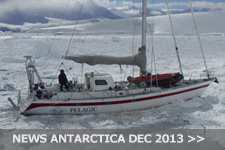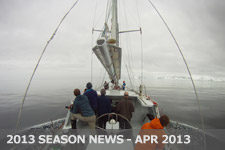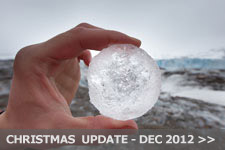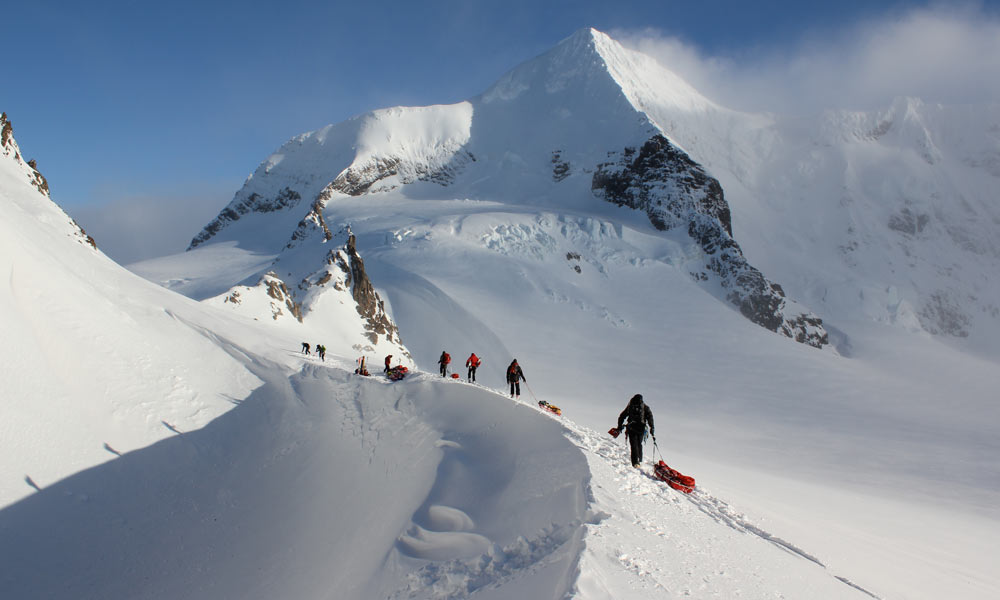22.11.2011 - Shackleton Traverse October 2011
Supported by Pelagic Australis
View slide show of expedition here>>
Once again October weather made the Shackleton Traverse a thoroughly enjoyable experience. We had good snow cover all the way and no problems with crevasses, making pulling pulks on skis a pleasure – well most of the time. I guess ‘pleasure’ must be qualified as that would depend on who in our British party of 10 you are talking to! Led by Stephen Venables and myself, supported by Pelagic Australis with skipper Miles Wise and mate Laura Parish, this was my 4th crossing in five years. Always a spectacular outing I am already looking forward to the next one.
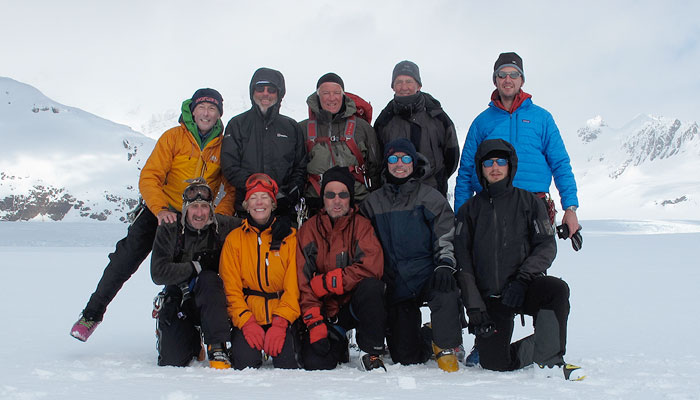
2011 Shackleton Traverse team
Three of our group of eight; John Wolfe, Jonathon Jones and Christopher Spray were Pelagic veterans from 2008 on the Peninsula. They were joined by Dick Dickinson, Martin Thomas, Tom Carrell, Janey King and Gavin Brazg. This group of mainly old friends from medical school were at first subjected to a five day training exercise in the Alps with Stephen in May. This always pays dividends, as the team breaks in and reviews their ski gear and misc equipment, has a thrash up and down the glaciers to test fitness and of course practice their winter camping skills, not least of all putting up the same types of tents as we would be using on the traverse.
After leaving Stanley on October 9th, we made land fall on the Willis Islands at the northwest extremity of the main island in three and half days, sailing most of the way. But as is usually the case, we had to wait two days in Elsehul Bay for a weather window, in any case desirable in order to recover from the sea voyage while fine tuning the gear and provisions (“ . . . are we carrying that round of cheese, yes or no?!”).
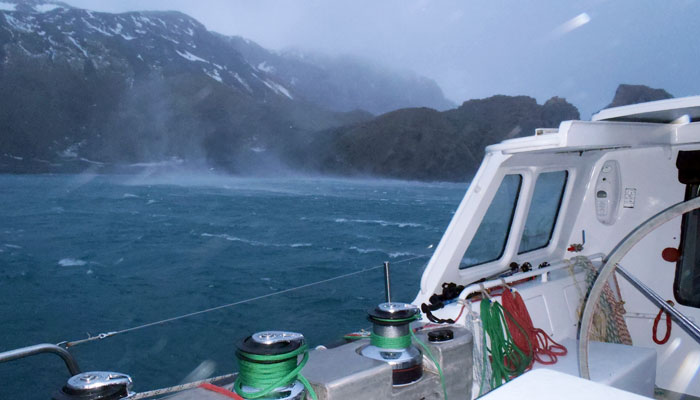
Williwaw blows through Elsehul while we wait for the weather window
Strong williwaws in Elsehul were dramatic and kept everyone’s interest and curiosity up in view of the days to come in the mountains. We eventually slid around to King Haakon Bay on the 15th of October in a dying westerly. It was a glorious sail with all the high ground in view, and our enthusiams soared. A heavy swell was still running into the bay – too rough to attempt a landing at Cape Cove safely so we proceeded down the fjord and anchored behind the islets near the head of the bay. That afternoon, after the usual fiddling about with kit, we discharged all our heavy gear on shore at the snow line which was only a five minute walk off the beach. Next morning we got away smartly at 0630, but the benign weather forecast of calm conditions, at the worst variable 5 to 10 knots, became immediately suspect once up on the Murray Glacier as we struggled with strong, crosswind knockdown gusts.
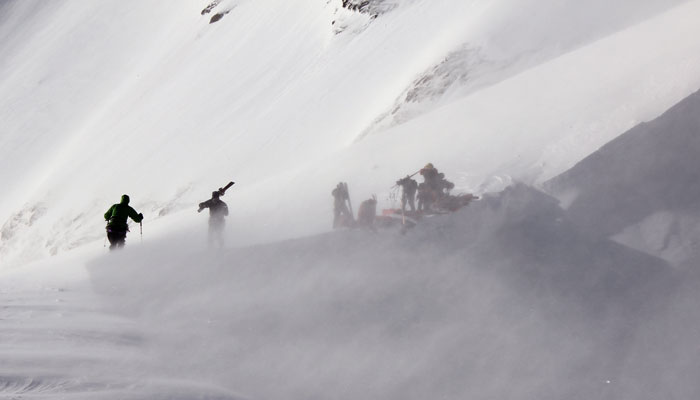
Knock down gust
Visibility at times was nil due to a combination of spindrift and cloud, and even a rest stop was largely an unpleasant experience of a rapid cooling off while fumbling in mittens with thermoses and water bottles. We finally arrived at the Trident Ridge at 1630, a long day out due to the somewhat tough travelling conditions, everyone sufficiently knackered.
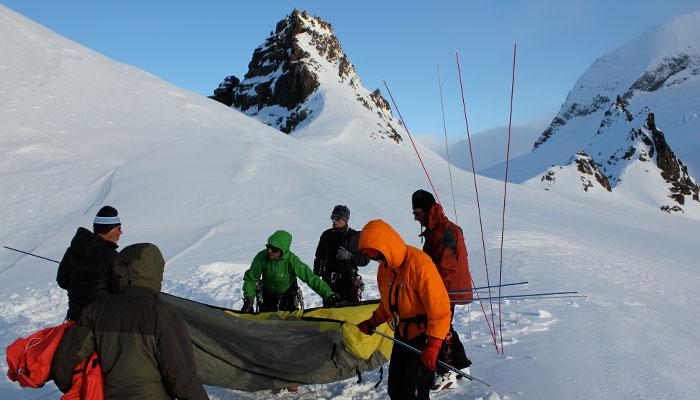
Setting up camp short of the Trident
Luckily, the next day dawned relatively calm for the critical ‘lower off’ from the Trident. In spite of having no technical hang-ups, it took 7 hours to lower off the ten pulks in three stages of 180 meters and get everyone down on a rope (in 2009 we had a pulk down a crevasse on the first stage) safely to the flat on the Crean Glacier. This was an eye opener as in 2009 when we had only seven people it took five hours. The axiom that speed in mountain travel is safe, certainly makes the case for smaller the party the better.
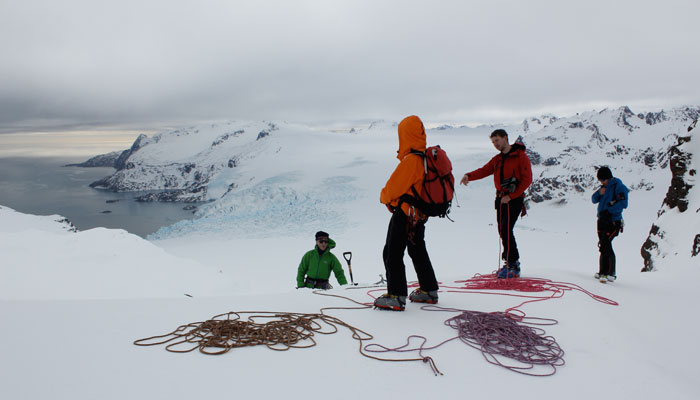
Preparing to lower off the pulks
In good conditions we carried on due east, steering for Shackleton’s big nunatak that marks the route, for another three hours, but we had had enough by 1700 and camped in the middle of the Crean in an exposed position. This was about two kilometers short of the crashed helicopter’s GPS position (Operation Paraquat, 1982 Falklands War). It was interesting that cracks were beginning to appear in the crevassed section of the Crean above Antarctic Bay, and the fact that the next day we actually found the crash site, with a meter of wreckage above the snow, indicating that not much base had accumulated during the past winter. In four crossings this is the first time I had seen the wreck. In 2006, as late as mid November, it had not been visible.
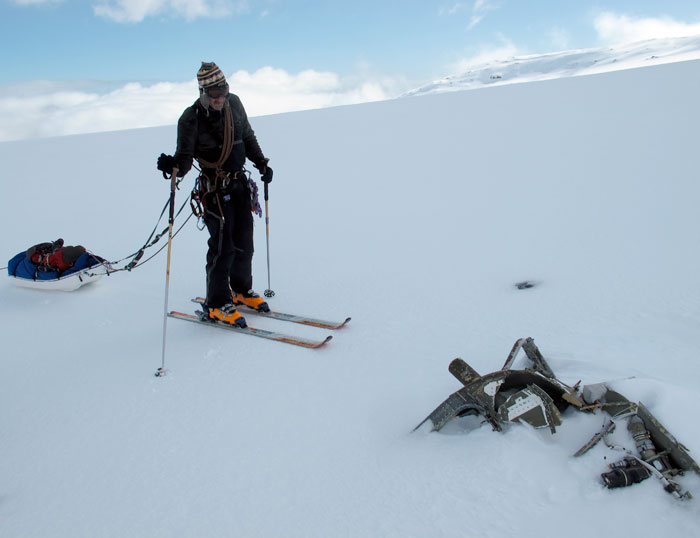
Wessex helicopter wreckage on the Crean Glacier
A short day on the 18th took us to another camp short of the Breakwind Ridge, at the base of a spur on the west side of the Fortuna Glacier. We had hoped to climb Mt Stanley or Peak Nicholls the next day, and at least have an enjoyable ski down without loads, but a blow was predicted on the 19th. The choices were to stay up here in a snow camp, or high tail it down to Fortuna Bay for a beach camp – the consensus (Stephen and I took ourselves out of the vote) was to get down and complete the glacier part of the traverse, more to get a change of scenery it appeared. That morning we skinned across the Fortuna and within two hours had hauled the pulks up to the Breakwind Ridge, ‘hand over handing’ them up from the windscoop on a 60 meter rope.
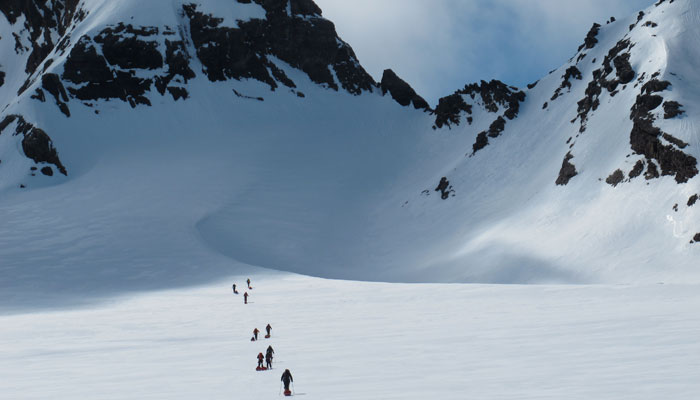
Up to Breakwind Gap
The conditions, although fresh and breezy, were superb with clear views down to Fortuna and across to Stromness, the white snow imprint of the ‘Z’ on the otherwise bare rock buttress clearly visible on the far side of the bay – another Shackleton landmark. Spring snow on a firm base made skiing the pulks down to the final gully a quick affair.
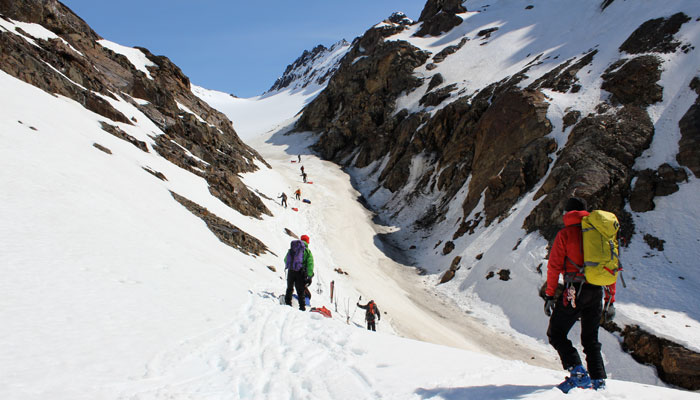
Down the gully
Then chivvying the gear through the narrows by coaxing, pulling, dropping and bum sliding with the loads made for an interesting ‘finale’ before the pleasant ski down the snow patches in amongst the King Penguins right to the beach, the two upturned pulks in seal wallows notwithstanding. We camped on beach shingle that night - and the next night - as it rained torrentially for over 24 hours. To go to the beach loo or to fill up water bottles at the clear stream some distance away meant a good soaking, consequently we lay prone in the tents for two nights and a day. Everyone said they enjoyed the rest!
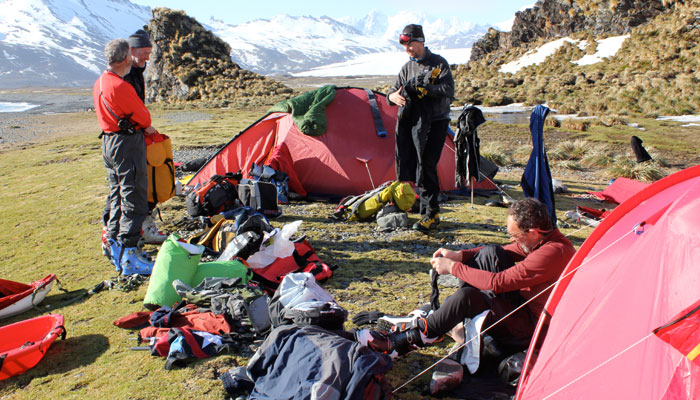
Drying out on the beach
Pelagic Australis left Grytviken at first light on the 21st and by 0900 she was jogging off the beach to take the camping gear off us, after an enjoyable morning’s drying out session.
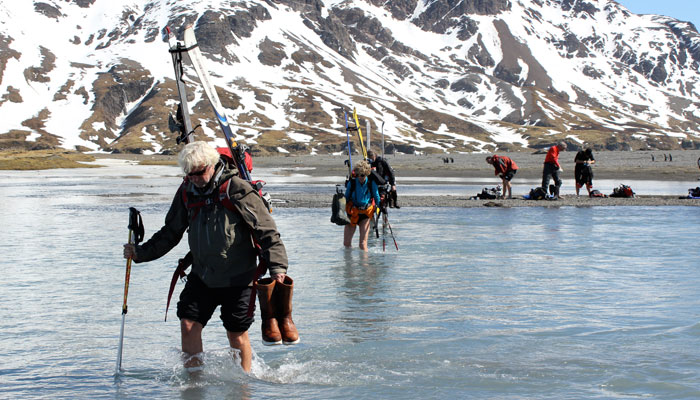
Wading the the stream
We then walked around the head of the bay in our rubber boats, waded the stream knee deep (painful as always) and then did the ‘the last day’ over the easy ground around Crean Lake to the col with a good ski down to the outwash plain.
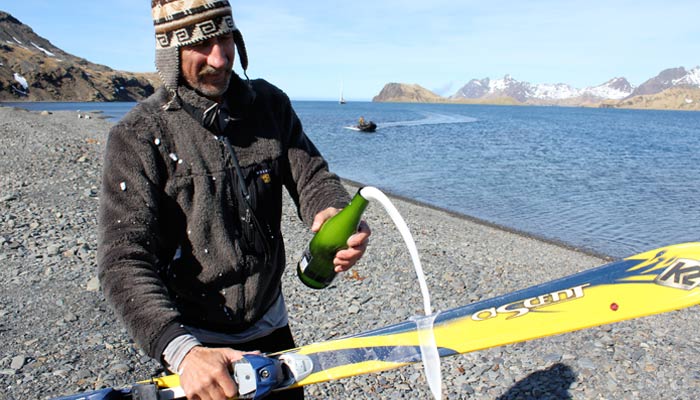
Skip cracks a celebration bottle
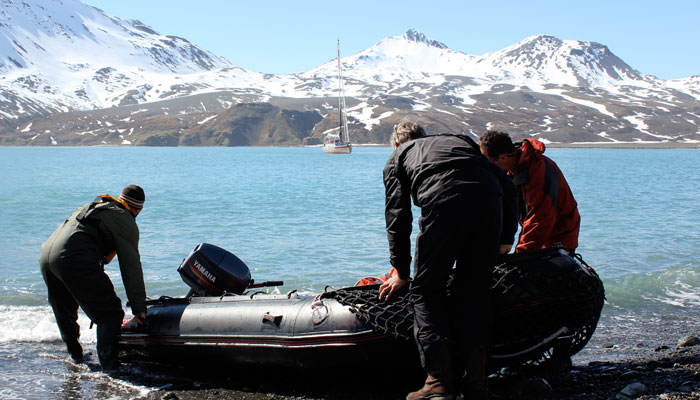
We were picked up by Pelagic Australis at 1400 – it was shower time!!
Skip Novak
View slide show of expedition here>>
or view video below:


